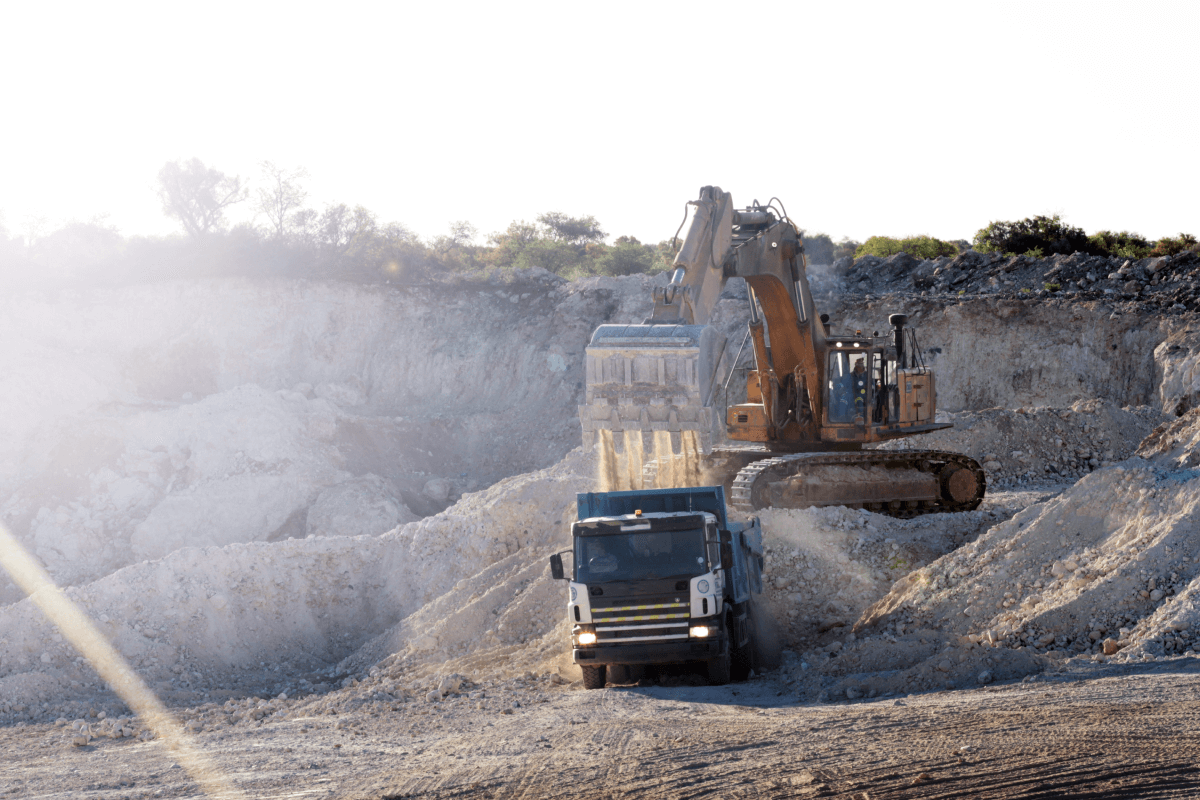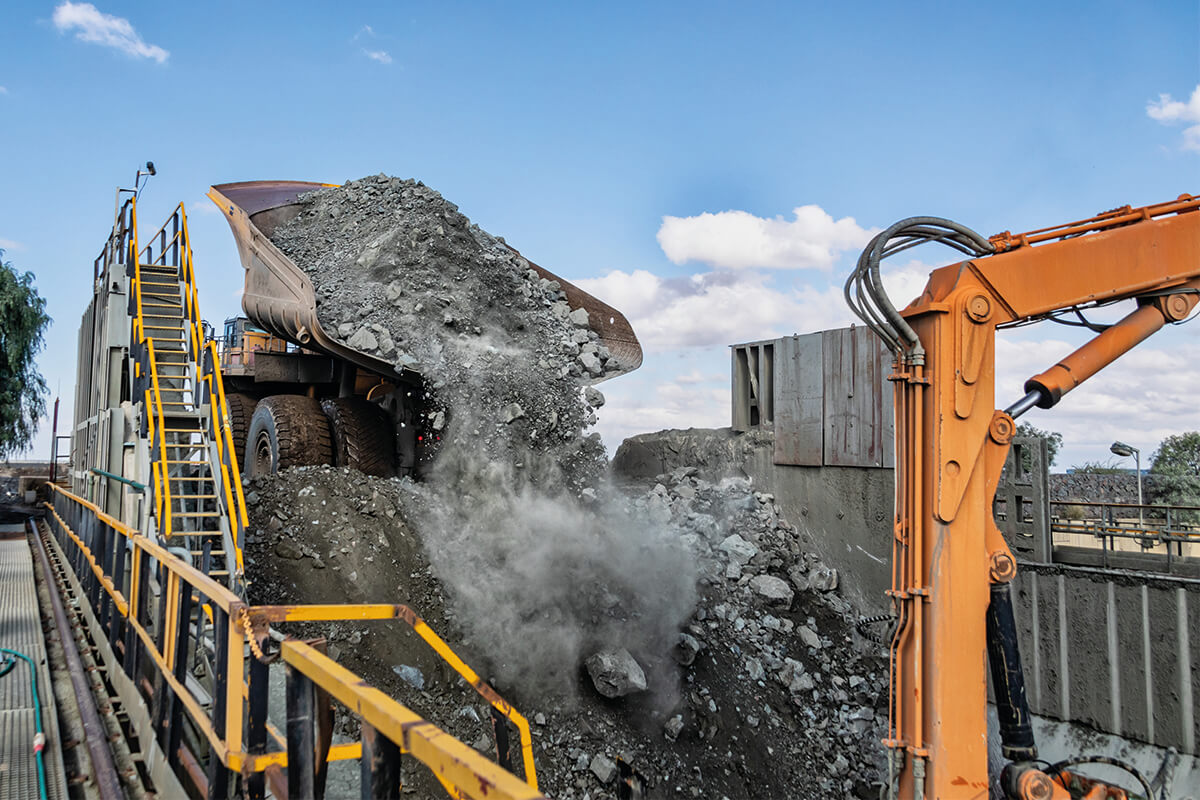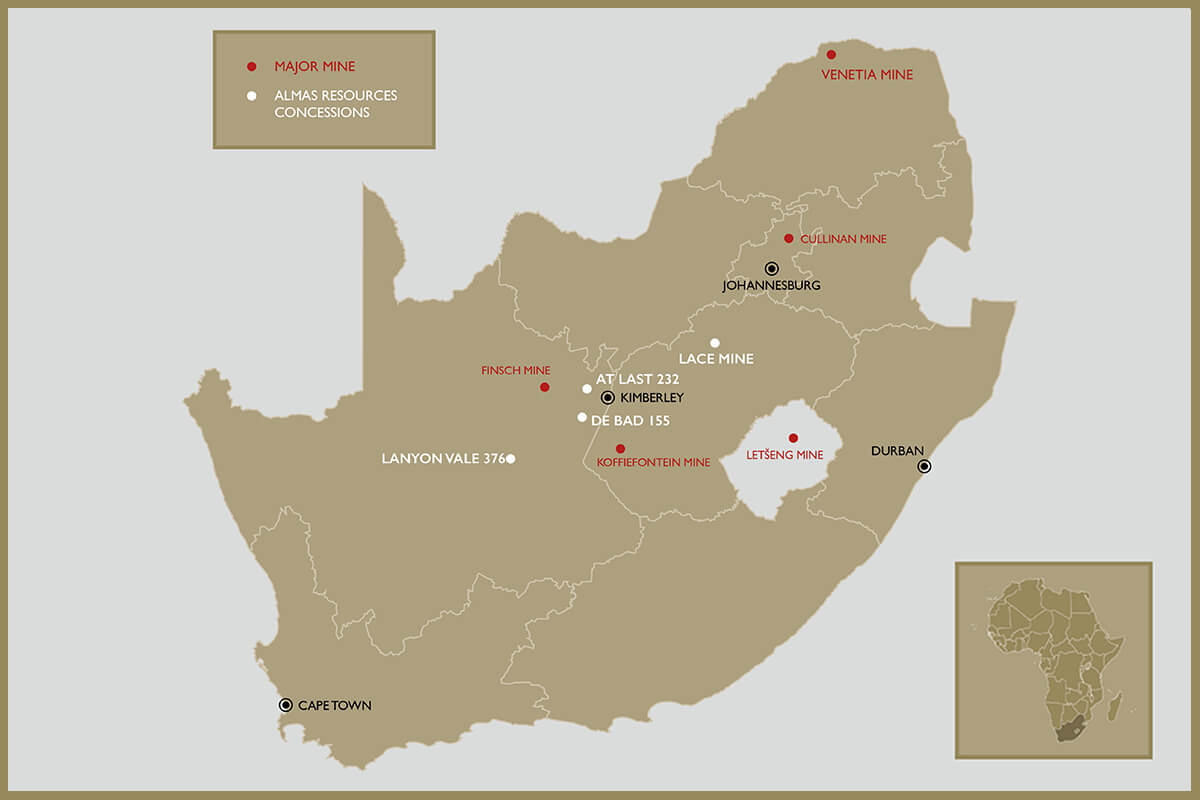Diamond Mining
Once the diamonds have been discovered in primary or secondary deposits, they need to be mined. There are four methods of diamond mining currently used in the world today.
These are:
- Open pit mining – This type of mining is used for kimberlite deposits and are impressive feats of engineering. It is the most common technique of recovering diamonds and it is used when kimberlite occurs near to the surface or has thin layer of gravel or sand, known as overburden.
- Underground mining – used once the open pit mine is no longer economically viable and is a more complex way of extracting ore and recovering diamonds.
- Alluvial mining – used for riverbeds and gravel deposits, where diamonds have been carried away from their original source, over millions of years.
- Marine mining – used on the ocean bed, specialist vessels mine at depths of 90 to 140 metres in the Atlantic Ocean using a seabed crawler that is attached to the ship through a flexible ‘umbilical cord’. The crawler is controlled on board the ship which acts as a floating processing plant.
There are very few countries around the world that have open pit and underground mining on large kimberlite deposits. These kimberlite deposit clusters are mostly present in Southern Africa, Russia and Canada. Marine mining is only conducted on the West coast of South Africa and Namibia, the same two countries also have prominent alluvial diamond mining operations. Many alluvial operations in South Africa today are in and around the Kimberley region of the country.
DIAMOND RECOVERY
To recover diamonds from their ore, there is a 4-phase process that is commonly used.
Phase 1: CRUSHING
Diamond-bearing ore and gravel is transported to a primary crusher to reduce large pieces of ore into smaller pieces that are no larger than 150mm. The smaller ore goes to a secondary crusher, or roll-crusher, to break the ore even further down before reaching the next stage.
Phase 2: SCRUBBING
The pieces of ore are scrubbed to remove any excess material and are then screened. Pieces of ore smaller than 1.5mm are discarded, as it is not economically viable to extract diamond from this size ore
Phase 3: DMS PLANT
The cyclonic action of a Dense Media Separator uses a solution of ferrosilicon powder and water that is blended to a specific density of 3.52 g/cm3 and mixed with the diamond-bearing ore. The solution is inserted into a cyclone, where it is tumbled and forced to separate. The materials with the highest density sink to the bottom of the cyclone, resulting in a rich diamond concentrate ready for the recovery plant.
Phase 4: RECOVERY
The diamond-rich concentrate goes through various processes that involve x-ray luminescence and crystallographic laser fluorescence. These processes separate the rough diamonds from the heavier ore that were collected in the DMS. Diamonds emit flashes of light which are detected by sensors which trigger a blast of air in the direction of the diamond so that it is collected in a box for final examination.
OUR PROJECTS
The At Last, De Bad and Lanyon Vale projects are all alluvial diamond projects situated along the well-known Vaal and Orange Rivers which have been the focus of alluvial diamond mining operations for over 130 years. The diamonds from these deposits are of exceptional size and quality and have been derived from the many diamond bearing kimberlites which lie within the current and ancient watersheds of these drainages and can be very profitable to mine with the right geological knowledge, mining, processing and recovery techniques and could deliver diamonds of up to 300ct.
The Lace Mine project is an underground mining project that has well documented diamond reserves within the kimberlite pipes. The mining operation has a diamond resource estimated to be around $2 Billion.



